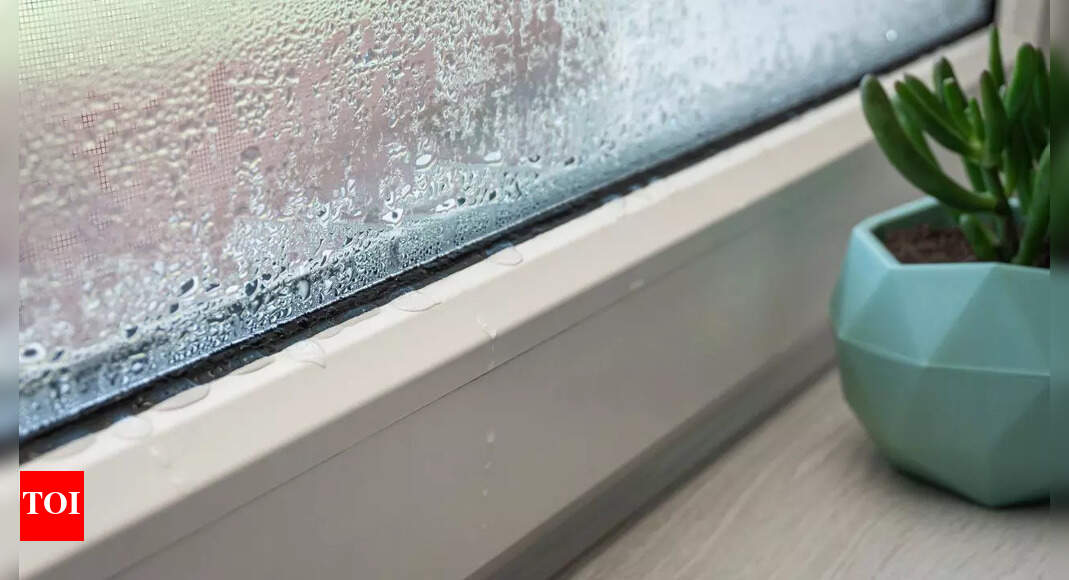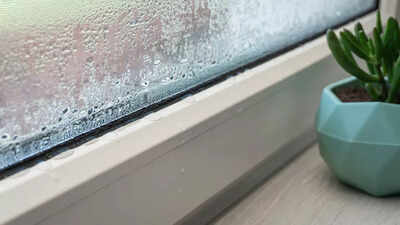
As the cooler months approach, many UK households notice water droplets forming on their windows each morning. This common issue, known as condensation, occurs when warm indoor air meets cold glass, causing moisture to collect on surfaces. While it might seem minor, persistent condensation can encourage mould growth, damp patches, and poor indoor air quality, posing health risks over time. Managing moisture early is key to keeping homes safe and comfortable. Luckily, a simple and budget-friendly solution exists. Using a common household item, baking soda, can naturally absorb excess moisture and help prevent condensation before it becomes a bigger problem.
Using baking soda to control moisture and stop window condensation
Baking soda, also known as sodium bicarbonate, is a common kitchen staple with many household uses. While most people use it for cleaning or deodorising, it’s also an excellent natural moisture absorber. Due to its porous structure, baking soda can trap excess water vapour from the air, helping to lower humidity levels in enclosed spaces.When placed near windows, it works by gradually pulling moisture out of the air before it can settle on cold surfaces like glass. This small change can make a big difference in preventing the formation of condensation and dampness in your home.Baking soda not only helps to neutralise odours but also absorbs moisture effectively from humid air. To use it, leave bowls of baking soda in rooms that tend to feel damp or stuffy. Larger spaces may require more baking soda to make a noticeable difference. For best results, start by testing this method in smaller areas, such as cupboards, wardrobes, or bathrooms, before using it in bigger rooms.
Simple steps to use baking soda for window condensation control
To use baking soda as a moisture absorber, start by filling small bowls or containers with a generous amount of baking soda. Place these bowls on windowsills, particularly in rooms where condensation is most common, such as bedrooms, kitchens, and bathrooms. As the baking soda works, it will gradually absorb humidity from the surrounding air.This is an inexpensive and eco-friendly solution for keeping windows dry during the colder months. Unlike dehumidifiers, which require electricity, this method is energy-free and silent, making it ideal for small spaces.Condensation tends to worsen during autumn and winter because indoor heating raises air temperature while outdoor air remains cold. This sharp temperature difference creates the perfect environment for moisture to condense on glass and walls. By reducing indoor humidity, baking soda helps slow down this process, keeping your home fresher and drier.
How to keep baking soda effective for moisture control
As baking soda absorbs more moisture, it begins to clump or harden. This indicates that it has reached its limit and needs to be replaced. The frequency of replacement depends on the size of the bowl, the amount of baking soda used, and the overall humidity level in your home.For best results, pour baking soda into bowls and cover each one with a thin cloth or mesh fabric. This helps prevent dust from settling while still allowing air to circulate. Place the covered bowls in the most humid parts of your home, such as near windows, kitchens, or laundry areas. Once the baking soda becomes cakey or solid, discard it and replace it with a fresh batch to continue absorbing moisture effectively.Managing condensation doesn’t always require expensive gadgets or chemical products. Sometimes, a small, natural remedy like baking soda can go a long way in improving air quality and reducing dampness. By strategically placing bowls of baking soda around your home, especially near windows, you can help minimise moisture build-up and protect your living space from the damaging effects of mould and mildew. This budget-friendly trick is an easy first step towards maintaining a healthier and more comfortable home during the colder months.Also Read: 8 natural ways to freshen up quilts and blankets during winter








